-
 Bitcoin
Bitcoin $92,857.3496
-1.03% -
 Ethereum
Ethereum $1,750.4828
-2.45% -
 Tether USDt
Tether USDt $1.0005
0.05% -
 XRP
XRP $2.1885
-2.18% -
 BNB
BNB $597.4359
-1.69% -
 Solana
Solana $149.8729
-1.30% -
 USDC
USDC $1.0000
0.01% -
 Dogecoin
Dogecoin $0.1788
-0.25% -
 Cardano
Cardano $0.7255
3.02% -
 TRON
TRON $0.2464
0.28% -
 Sui
Sui $3.2757
10.22% -
 Chainlink
Chainlink $14.8489
-0.12% -
 Avalanche
Avalanche $22.0620
-1.11% -
 Stellar
Stellar $0.2755
2.43% -
 UNUS SED LEO
UNUS SED LEO $9.2218
1.65% -
 Toncoin
Toncoin $3.1533
-0.18% -
 Shiba Inu
Shiba Inu $0.0...01341
-1.13% -
 Hedera
Hedera $0.1856
1.66% -
 Bitcoin Cash
Bitcoin Cash $349.6685
-3.25% -
 Polkadot
Polkadot $4.1453
0.80% -
 Litecoin
Litecoin $82.8054
-1.43% -
 Hyperliquid
Hyperliquid $17.9889
-3.15% -
 Dai
Dai $1.0001
0.00% -
 Bitget Token
Bitget Token $4.4327
-1.75% -
 Ethena USDe
Ethena USDe $0.9995
0.02% -
 Pi
Pi $0.6476
-1.41% -
 Monero
Monero $227.9399
-0.28% -
 Uniswap
Uniswap $5.8086
-3.78% -
 Pepe
Pepe $0.0...08567
-4.18% -
 Aptos
Aptos $5.4495
1.50%
How to use ADA's trading API?
Cardano's trading API enables developers and traders to automate strategies and integrate ADA trading into apps, with setup involving account registration, API key generation, and secure key management.
Apr 20, 2025 at 09:35 pm
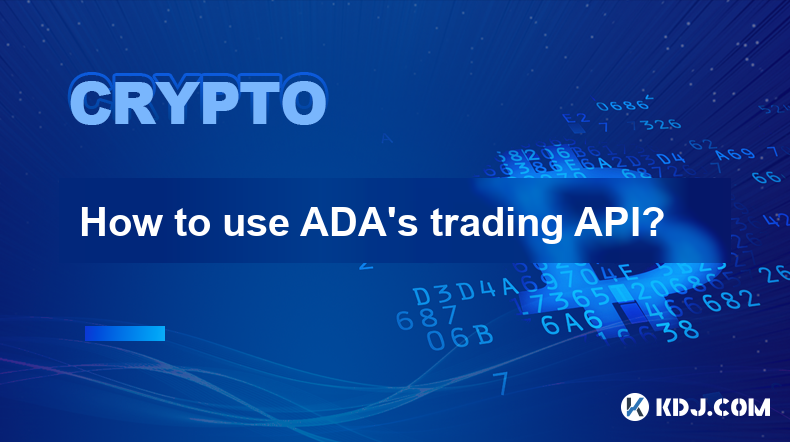
Using Cardano's (ADA) trading API can be a powerful tool for developers and traders looking to automate their trading strategies or integrate Cardano trading functionalities into their applications. This article will guide you through the process of setting up and using ADA's trading API, ensuring you have a comprehensive understanding of how to leverage it effectively.
Understanding Cardano's Trading API
Cardano's trading API is a set of protocols and tools provided by cryptocurrency exchanges that support Cardano trading. These APIs allow users to programmatically interact with the exchange, enabling them to execute trades, retrieve market data, and manage their trading accounts. The API endpoints are typically accessed via HTTP requests, and the data is usually returned in JSON format.
Before diving into the technical details, it's important to understand that different exchanges may offer different features and levels of access through their APIs. For this article, we will focus on a general approach to using ADA's trading API, which can be adapted to specific exchanges like Binance, Kraken, or Coinbase Pro.
Setting Up Your API Access
To begin using ADA's trading API, you first need to set up an account with a cryptocurrency exchange that supports Cardano trading and offers an API. Here's how you can do that:
- Register and Verify Your Account: Sign up for an account on the chosen exchange. Complete any necessary identity verification processes to ensure your account is fully operational.
- Enable API Access: Navigate to the API section of your exchange's settings. Enable API access and generate your API keys. You will typically receive an API key and a secret key.
- Secure Your API Keys: Store your API keys securely. Never share them with anyone, and consider using environment variables or a secure storage solution to manage them within your application.
Authenticating Your API Requests
Once you have your API keys, you need to authenticate your requests to the exchange's API. Most exchanges use a signature-based authentication method. Here’s how to authenticate your requests:
- Create a Timestamp: Generate a timestamp in the format required by the exchange. This is often in milliseconds since the Unix epoch.
- Construct the Request: Prepare your HTTP request, including the endpoint URL and any parameters.
- Generate the Signature: Using your secret key, create a signature of the request. The exact method for generating the signature can vary, but it typically involves hashing the request data with the secret key using an algorithm like HMAC-SHA256.
- Add Headers: Include the API key, timestamp, and signature in the headers of your request. The headers might look something like this:
X-MBX-APIKEY: your_api_key
X-MBX-TIMESTAMP: your_timestamp
X-MBX-SIGNATURE: your_signature
Making API Requests
With your authentication in place, you can start making API requests. Here are some common types of requests you might make when trading ADA:
- Retrieving Market Data: Use endpoints like
/api/v3/ticker/priceto get the current price of ADA or/api/v3/klinesto retrieve historical candlestick data. These endpoints help you analyze market trends and make informed trading decisions. - Placing Orders: Use endpoints like
/api/v3/orderto place market, limit, or stop orders. For example, to buy ADA at the current market price, you might send a POST request with parameters specifying the symbol as ADA and the side as BUY. - Managing Orders: Use endpoints like
/api/v3/openOrdersto view your current open orders or/api/v3/orderwith the appropriate parameters to cancel an order.
Handling Responses and Errors
When making API requests, it's crucial to handle responses and errors appropriately:
- Parsing Responses: Most API responses will be in JSON format. Parse the JSON to extract the relevant data, such as order status or market prices.
- Error Handling: Be prepared to handle various error codes that the API might return. Common errors include invalid API keys, rate limiting, and insufficient funds. Implement error handling to gracefully manage these scenarios and retry requests if necessary.
Example: Placing a Market Order
To illustrate how to use ADA's trading API, let's walk through the process of placing a market order to buy ADA:
- Prepare the Request: Decide on the amount of ADA you want to buy and the currency you're using to buy it. For example, you might want to buy 100 ADA with USDT.
- Construct the Request: Use the
/api/v3/orderendpoint with the following parameters:{
"symbol": "ADAUSDT",
"side": "BUY",
"type": "MARKET",
"quantity": "100"
} - Authenticate the Request: Generate the timestamp and signature as described earlier, and include them in the request headers.
- Send the Request: Use an HTTP client library in your preferred programming language to send the POST request to the exchange's API.
- Handle the Response: Parse the JSON response to check the status of your order. If successful, you should receive an order ID and other relevant details.
Monitoring and Managing Your Trades
After placing an order, you need to monitor and manage your trades effectively:
- Check Order Status: Use endpoints like
/api/v3/orderto check the status of your orders. You can poll these endpoints at regular intervals to see if your orders have been filled. - Cancel Orders: If market conditions change, you might need to cancel an order. Use the
/api/v3/orderendpoint with thecancelparameter to do so. - Retrieve Account Information: Use endpoints like
/api/v3/accountto check your current balance and ensure you have sufficient funds for your trades.
Integrating with Trading Bots
For more advanced users, integrating ADA's trading API with trading bots can automate your trading strategy. Here's a basic outline of how to do this:
- Choose a Trading Bot Framework: Select a framework like CCXT or Gekko that supports the exchange you're using.
- Configure the Bot: Set up your bot with your API keys and define your trading strategy. This might involve setting up indicators, entry and exit signals, and risk management rules.
- Run and Monitor the Bot: Start the bot and monitor its performance. Adjust your strategy as needed based on the bot's performance and market conditions.
Frequently Asked Questions
Q: Can I use ADA's trading API for high-frequency trading?
A: Yes, you can use ADA's trading API for high-frequency trading, but you need to be aware of the exchange's rate limits and ensure your requests do not exceed these limits. High-frequency trading also requires robust error handling and efficient code to manage the high volume of requests.
Q: Are there any fees associated with using ADA's trading API?
A: Yes, most exchanges charge fees for using their API, which can include trading fees and API request fees. Check the fee structure of your chosen exchange to understand the costs involved.
Q: Can I use ADA's trading API to trade other cryptocurrencies?
A: Yes, if the exchange supports other cryptocurrencies, you can use the same API to trade them. The specific endpoints and parameters might vary, but the general process remains the same.
Q: Is it safe to use ADA's trading API?
A: Using ADA's trading API can be safe if you follow best practices for securing your API keys and managing your requests. Always use secure connections (HTTPS), store your keys securely, and be cautious of potential phishing attempts.
Disclaimer:info@kdj.com
The information provided is not trading advice. kdj.com does not assume any responsibility for any investments made based on the information provided in this article. Cryptocurrencies are highly volatile and it is highly recommended that you invest with caution after thorough research!
If you believe that the content used on this website infringes your copyright, please contact us immediately (info@kdj.com) and we will delete it promptly.
- How to Invest in Bitcoin According to Former Goldman Sachs Executive
- 2025-04-25 01:30:12
- JACKBIT Emerges as the Best Bitcoin Casino for 2025, Praised for Its No KYC Policy and Instant Withdrawals
- 2025-04-25 01:30:12
- ruya Becomes the First Islamic Bank to Offer Bitcoin and Virtual Asset Investments
- 2025-04-25 01:25:12
- Bitcoin reserves on cryptocurrency exchanges have dropped to their lowest level in more than six years
- 2025-04-25 01:25:12
- Bitcoin Soars : Satoshi Nakamoto’s Colossal Fortune
- 2025-04-25 01:20:12
- Don't Miss BTFD Coin's FINAL100 Bonus and $0.0002 Entry—Presale Ends May 26
- 2025-04-25 01:20:12
Related knowledge
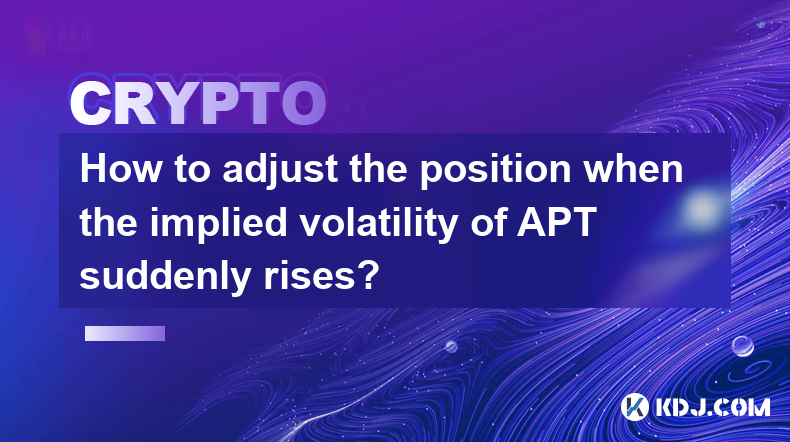
How to adjust the position when the implied volatility of APT suddenly rises?
Apr 24,2025 at 09:42pm
When the implied volatility of APT suddenly rises, it can significantly impact your trading positions. Adjusting your positions effectively requires a thorough understanding of the situation and a strategic approach. In this article, we will explore how to manage your positions when the implied volatility of APT increases unexpectedly. Understanding Imp...

Does the increase in net outflow of APT exchanges represent bullishness?
Apr 24,2025 at 06:57pm
The concept of net outflow of APT (Aptos) from exchanges and its potential correlation with bullish sentiment is a topic of interest within the cryptocurrency community. The net outflow refers to the volume of APT tokens being withdrawn from cryptocurrency exchanges, which can be interpreted as a signal of investor behavior and market sentiment. This ar...
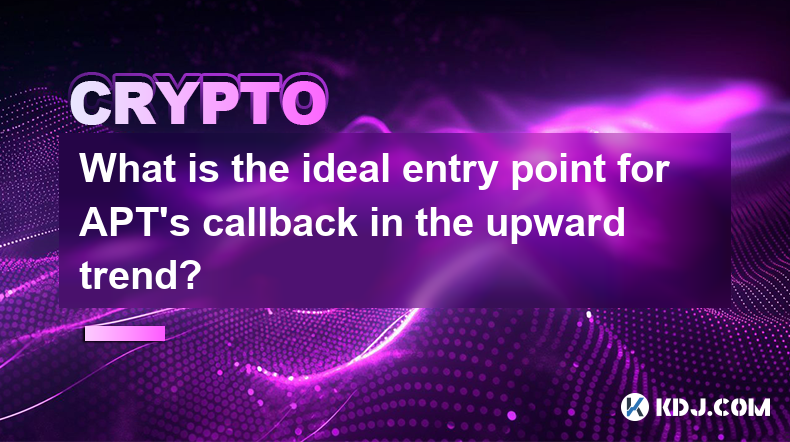
What is the ideal entry point for APT's callback in the upward trend?
Apr 24,2025 at 11:50pm
In the world of cryptocurrency trading, identifying the ideal entry point for a token's callback in an upward trend is crucial for maximizing profits and minimizing risks. APT, or Aptos, is a relatively new player in the crypto market, and understanding its price movements and potential entry points can be challenging. This article delves into the facto...
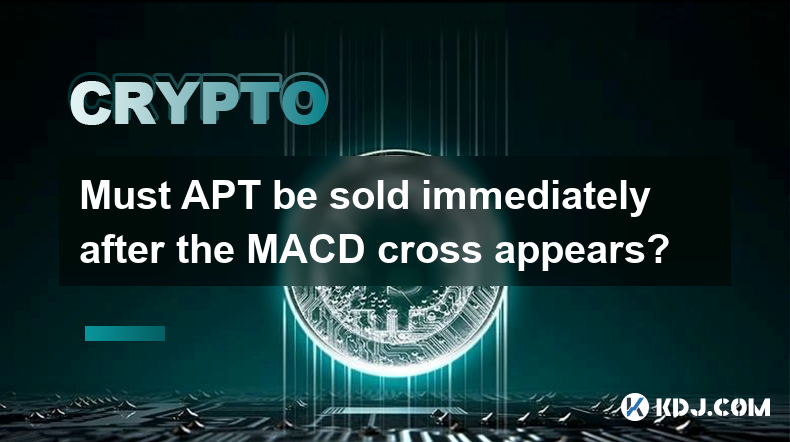
Must APT be sold immediately after the MACD cross appears?
Apr 24,2025 at 07:43pm
The question of whether APT (Aptos) should be sold immediately after a MACD (Moving Average Convergence Divergence) cross appears is a common one among traders. The MACD is a popular technical indicator used to identify potential buy and sell signals in the cryptocurrency market. However, the decision to sell APT immediately after a MACD cross is not st...
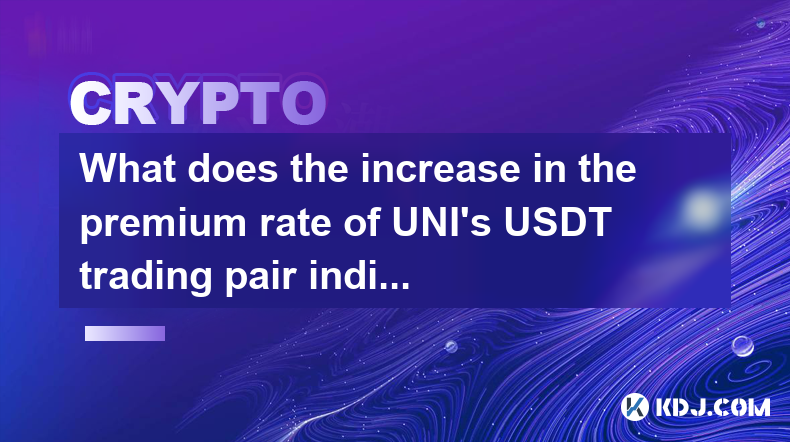
What does the increase in the premium rate of UNI's USDT trading pair indicate?
Apr 24,2025 at 09:21pm
The increase in the premium rate of UNI's USDT trading pair is a significant indicator within the cryptocurrency market, reflecting various dynamics and sentiments among traders and investors. This phenomenon can provide insights into the perceived value, demand, and market conditions surrounding Uniswap's native token, UNI. In this article, we will exp...

What impact will large-scale on-chain transfers of UNI have on prices?
Apr 24,2025 at 09:56pm
Large-scale on-chain transfers of UNI, the governance token of the Uniswap decentralized exchange, can have significant impacts on its price. These impacts can be multifaceted, influenced by various factors such as market sentiment, liquidity, and the intent behind the transfers. This article will delve into the different ways in which large-scale on-ch...

How to adjust the position when the implied volatility of APT suddenly rises?
Apr 24,2025 at 09:42pm
When the implied volatility of APT suddenly rises, it can significantly impact your trading positions. Adjusting your positions effectively requires a thorough understanding of the situation and a strategic approach. In this article, we will explore how to manage your positions when the implied volatility of APT increases unexpectedly. Understanding Imp...

Does the increase in net outflow of APT exchanges represent bullishness?
Apr 24,2025 at 06:57pm
The concept of net outflow of APT (Aptos) from exchanges and its potential correlation with bullish sentiment is a topic of interest within the cryptocurrency community. The net outflow refers to the volume of APT tokens being withdrawn from cryptocurrency exchanges, which can be interpreted as a signal of investor behavior and market sentiment. This ar...

What is the ideal entry point for APT's callback in the upward trend?
Apr 24,2025 at 11:50pm
In the world of cryptocurrency trading, identifying the ideal entry point for a token's callback in an upward trend is crucial for maximizing profits and minimizing risks. APT, or Aptos, is a relatively new player in the crypto market, and understanding its price movements and potential entry points can be challenging. This article delves into the facto...

Must APT be sold immediately after the MACD cross appears?
Apr 24,2025 at 07:43pm
The question of whether APT (Aptos) should be sold immediately after a MACD (Moving Average Convergence Divergence) cross appears is a common one among traders. The MACD is a popular technical indicator used to identify potential buy and sell signals in the cryptocurrency market. However, the decision to sell APT immediately after a MACD cross is not st...

What does the increase in the premium rate of UNI's USDT trading pair indicate?
Apr 24,2025 at 09:21pm
The increase in the premium rate of UNI's USDT trading pair is a significant indicator within the cryptocurrency market, reflecting various dynamics and sentiments among traders and investors. This phenomenon can provide insights into the perceived value, demand, and market conditions surrounding Uniswap's native token, UNI. In this article, we will exp...

What impact will large-scale on-chain transfers of UNI have on prices?
Apr 24,2025 at 09:56pm
Large-scale on-chain transfers of UNI, the governance token of the Uniswap decentralized exchange, can have significant impacts on its price. These impacts can be multifaceted, influenced by various factors such as market sentiment, liquidity, and the intent behind the transfers. This article will delve into the different ways in which large-scale on-ch...
See all articles























































































